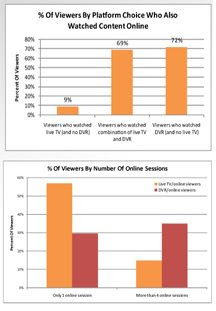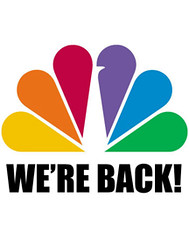Now that most people are attempting to master the digital space, it's clearly time to think beyond it. That was the primary impression left by Dale Sprague, president of Canyon Creative in Las Vegas, while speaking to my Writing For Public Relations class at the University of Nevada, Las Vegas, last Thursday.
When Sprague, a designer and creative director who invested the majority of his career in print, product design, and packaging, said that print had largely become a support medium for digital marketing, the reaction was immediate and dramatic. Not only had everything advertising agencies been cautioned about for by people like me for a decade come to fruition, but it was time time to rethink what's next.
Everything you think you know about marketing is about to change.
The changes ahead won't be confined to a medium, but message delivery in entirety. Much like Patrick Collings recently wrote, brands that fail to innovate will fill graveyards. Their names won't be remembered either. Instead, their tombstones will be decorated with the cliches that killed them.
You can see these changes taking place all around you. Signage has lost ground to environmental graphics. Branded giftware and novelty items are being supplanted with branded product innovation (actual products designed for marketing purposes, some of which are produced by 3-D printers). Glass is quietly becoming a new marketing canvas (projected holograms along with it). And print?
Print isn't as dead as people think. Much like public relations professionals always had to find new ways to reach journalists as news releases transitioned from mail to fax to email to social, marketers are best served when they start to ask themselves the right question.
Specifically, the right question isn't "where is everybody spending their marketing dollars?" The right question is "where aren't people spending their marketing dollars so my organization doesn't have to compete?" Ergo, the social-digital space has to be part of the marketing mix but it's also a very competitive, crowded, and cluttered place. It creates a market where a handwritten thank you counts.
Even online, people are finding that it's not enough to be everywhere because you put your content everywhere. Marketers need to be everywhere because they are part of what a public considers relevant. Ergo, real marketers aren't content trying to infuse their presence into a trending topic. They are the trending topics because they do things. They are top of mind because they made an impression.
Where does print stack up in a world that seems digital?
Print works were it always worked best. It is a high-touch medium that was temporarily downgraded because of the economics of junk mail with blow-in scrap paper and cluttered messages.
Before mail was loaded down with mainstream marketing, it primarily consisted of individual notes and invitations, niche newsletters that felt exclusive, and something thoughtfully sent through the mail because it might actually have value and you might keep it. It will in the future too, with specialty papers that capitalize on the one sense that consumers miss in digital — touch — and a message more memorable than a business card, even those that don't already have chips embedded in them.
 Print won't be alone, of course. All of it will change and some of it for the better as marketers buy up space not because they want to fill it with 8-point bullet points and 140 characters of gratuitous interruption but clearly defined messaging with plenty of white/negative/neutral space to frame it.
Print won't be alone, of course. All of it will change and some of it for the better as marketers buy up space not because they want to fill it with 8-point bullet points and 140 characters of gratuitous interruption but clearly defined messaging with plenty of white/negative/neutral space to frame it.
What does that mean? Every year, when I teach any class, I make note of how the number of impressions has continued to increase before a message even has a chance to penetrate the consciousness of someone who is already receiving a novel-sized amount of information every day. What used to be three impressions now exceeds 300 — that means you need 300 impressions before something sticks.
But, you see, that isn't always the case. We've crossed a clutter threshold that makes some messages stick the one time, the first time. Ergo, if you show someone a Mona Lisa (the real one, not a facsimile), they will never forget it. And maybe that is how we should see print and advertising going forward.
Print doesn't haven't to be a support piece to digital. Like any message delivery system, it only needs to break through the clutter of a message saturated world. Or, in other words, a message that feels immediate (purpose driven), individual (personal), and important (value driven) delivered by the most appropriate means given the context.
That is what print will look like. And marketing will too. You can wait for it to happen or you can leap ahead and start implementing these ideas today.
When Sprague, a designer and creative director who invested the majority of his career in print, product design, and packaging, said that print had largely become a support medium for digital marketing, the reaction was immediate and dramatic. Not only had everything advertising agencies been cautioned about for by people like me for a decade come to fruition, but it was time time to rethink what's next.
Everything you think you know about marketing is about to change.
The changes ahead won't be confined to a medium, but message delivery in entirety. Much like Patrick Collings recently wrote, brands that fail to innovate will fill graveyards. Their names won't be remembered either. Instead, their tombstones will be decorated with the cliches that killed them.
You can see these changes taking place all around you. Signage has lost ground to environmental graphics. Branded giftware and novelty items are being supplanted with branded product innovation (actual products designed for marketing purposes, some of which are produced by 3-D printers). Glass is quietly becoming a new marketing canvas (projected holograms along with it). And print?
Print isn't as dead as people think. Much like public relations professionals always had to find new ways to reach journalists as news releases transitioned from mail to fax to email to social, marketers are best served when they start to ask themselves the right question.
Specifically, the right question isn't "where is everybody spending their marketing dollars?" The right question is "where aren't people spending their marketing dollars so my organization doesn't have to compete?" Ergo, the social-digital space has to be part of the marketing mix but it's also a very competitive, crowded, and cluttered place. It creates a market where a handwritten thank you counts.
Even online, people are finding that it's not enough to be everywhere because you put your content everywhere. Marketers need to be everywhere because they are part of what a public considers relevant. Ergo, real marketers aren't content trying to infuse their presence into a trending topic. They are the trending topics because they do things. They are top of mind because they made an impression.
Where does print stack up in a world that seems digital?
Print works were it always worked best. It is a high-touch medium that was temporarily downgraded because of the economics of junk mail with blow-in scrap paper and cluttered messages.
Before mail was loaded down with mainstream marketing, it primarily consisted of individual notes and invitations, niche newsletters that felt exclusive, and something thoughtfully sent through the mail because it might actually have value and you might keep it. It will in the future too, with specialty papers that capitalize on the one sense that consumers miss in digital — touch — and a message more memorable than a business card, even those that don't already have chips embedded in them.
 Print won't be alone, of course. All of it will change and some of it for the better as marketers buy up space not because they want to fill it with 8-point bullet points and 140 characters of gratuitous interruption but clearly defined messaging with plenty of white/negative/neutral space to frame it.
Print won't be alone, of course. All of it will change and some of it for the better as marketers buy up space not because they want to fill it with 8-point bullet points and 140 characters of gratuitous interruption but clearly defined messaging with plenty of white/negative/neutral space to frame it.What does that mean? Every year, when I teach any class, I make note of how the number of impressions has continued to increase before a message even has a chance to penetrate the consciousness of someone who is already receiving a novel-sized amount of information every day. What used to be three impressions now exceeds 300 — that means you need 300 impressions before something sticks.
But, you see, that isn't always the case. We've crossed a clutter threshold that makes some messages stick the one time, the first time. Ergo, if you show someone a Mona Lisa (the real one, not a facsimile), they will never forget it. And maybe that is how we should see print and advertising going forward.
Print doesn't haven't to be a support piece to digital. Like any message delivery system, it only needs to break through the clutter of a message saturated world. Or, in other words, a message that feels immediate (purpose driven), individual (personal), and important (value driven) delivered by the most appropriate means given the context.
That is what print will look like. And marketing will too. You can wait for it to happen or you can leap ahead and start implementing these ideas today.








































